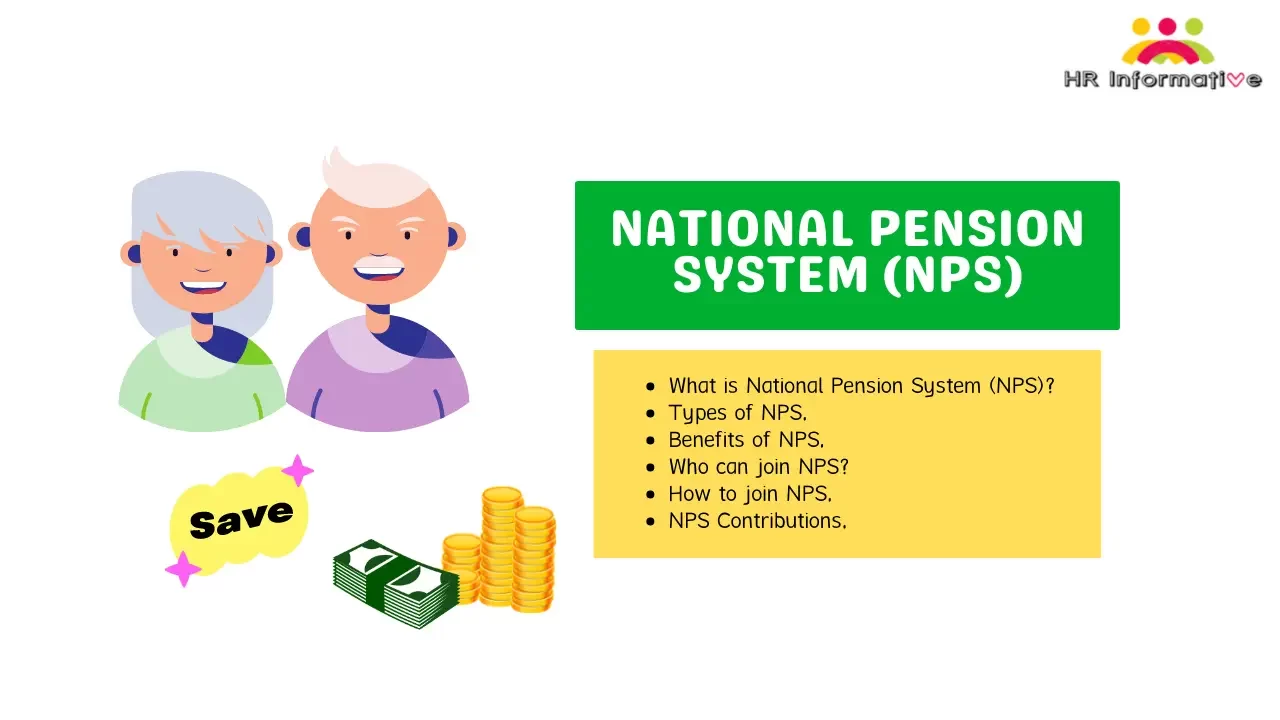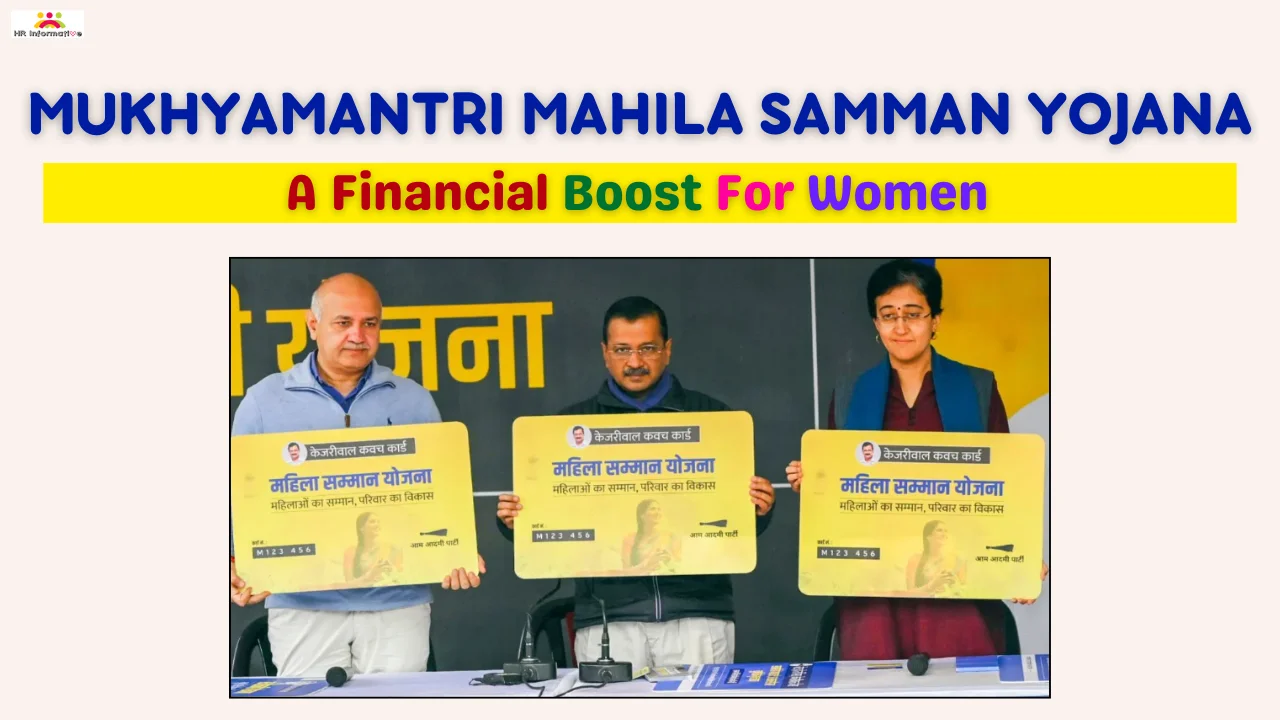National Pension System (NPS) is a voluntary and long-term investment plan for retirement under the purview of the Pension Fund Regulatory and Development Authority (PFRDA). In this article, we have covered some important points that you should know about it before joining. Let’s get started.
What is National Pension System (NPS)?
National Pension System (NPS) is also known as National Penson Scheme. NPS is a pension cum investment scheme launched by the Government of India to provide old age security to Citizens of India. NPS was launched in 2004 and it was initially available only for government employees but in 2009 it was extended to all sectors. NPS is now open to all employees from the Public, Private and Unorganised Sectors but not to those who work in the Armed Forces.
The Scheme is regulated by Pension Fund Regulatory and Development Authority (PFRDA). It is specially designed to provide financial security to senior citizens post-retirement.
NPS allows the subscribers to make periodic contributions towards their NPS account during the working years and build a corpus that they can use during their old age.
On retirement or exit from the scheme, the Corpus is made available to the Subscriber with the mandate that some portion of the Corpus must be invested into an Annuity to provide a monthly pension post-retirement or exit from the scheme.
Types of NPS
The National Pension System (NPS) is structured into two tiers:
Tier-I Account: This is the non-withdrawable permanent retirement account into which the regular contributions made by the subscriber are credited and invested as per the portfolio/fund manager chosen by the subscriber.
Tier-II Account: This is a voluntary withdrawable account which is allowed only when there is an active Tier I account in the name of the subscriber. The withdrawals are permitted from this account as per the needs of the subscriber as and when required.
Benefits of NPS
There are the following benefits of the National Pension System (NPS).
Attractive Returns / Interest
The contribution made towards the NPS is invested in various market-linked instruments, government bonds, corporate bonds, and equities which offer higher returns as compared to other traditional fixed-income investment options like Bank Fixed Deposit and PPF.
Benefit in Tax
Another benefit that NPS offers to individuals is benefit in tax. The contribution made towards the NPS up to the maximum limit of Rs.1.5 lakhs is eligible for tax exemption under Section 80C of the Income Tax Act.
Premature Withdrawals
The NPS subscriber mandatory requires to invest in the scheme until the age of 60. However partial withdrawals are allowed after 3 years from the date of opening the account. The subscriber can withdraw up to a maximum of 25% of the total contribution made. Premature withdrawal is only applicable in specific circumstances such as home purchasing, a child’s education, or in case of any medical emergency.
Withdraw Rules (After the Age of 60)
In the NPS scheme, the individual cannot withdraw the entire accumulated fund from the account after retirement. In this scheme, it is mandatory to keep aside at least 40% of the accumulated funds to receive a regular annuity from the PFRDA registered insurance firm. The remaining 60% of the accumulated fund can be withdrawn and it is exempted from tax.
Voluntary
This scheme is voluntary. In the NPS scheme, the subscriber can contribute anytime during a financial year and can also change the amount they want to invest every year.
Simple
Opening an account with NPS provides a Permanent Retirement Account Number (PRAN), which is a unique number and it remains with the subscriber throughout his lifetime.
Once the PRAN account is opened, an online login ID and password are provided to the subscriber. He/she can login and view/manage his NPS account online, with a click.
Ease of Access
The NPS account is manageable online. An NPS account can be opened through the eNPS portal. Further contributions can also be made online.
Portable
NPS provides seamless portability across jobs and locations. It would provide a hassle-free arrangement for the individual subscribers while he/she shifts to the new job/location, without leaving behind the corpus build.
Flexible
NPS offers a range of investment options and choices of Pension Funds (PFs) for planning the growth of the investments in a reasonable manner and monitoring the growth of the pension corpus. Subscribers can switch over from one investment option to another or from one fund manager to another.
Well Regulated
The NPS is regulated by the Pension Fund Regulatory and Development Authority of India (PFRDA) with transparent investment norms, regular monitoring, and performance review of fund managers by NPS Trust.
Who Can Join NPS?
Any individual citizen of India (both resident and non-resident) in the age group of 18-70 years can join NPS.
How to Join NPS
All Citizens of India
Option I : Any citizen of India, who meets the stipulated eligible conditions, can open his/her NPS account through an online facility (eNPS).
Through this facility, NPS account holders can also make subsequent contributions to their account hassle-free using Net Banking/ Debit Card/ Credit Card.
Option II : Entities called Point of Presence (POP) are appointed by PFRDA to service the individual subscribers, including their registration and acceptance of further contributions. The registration form for joining NPS can be collected from any of the Point of Presence-Service Providers (POP-SP).
Government / Corporate Sector
To enroll under the Central Government / State government Sector, you may approach your HR Dept./ Pay and Accounts Office (the Nodal Office for NPS). The formalities are to be completed, in guidance and through the Nodal Office.
Minimum NPS Contributions
In the NPS scheme, the contribution of the subscribers is invested into market-linked instruments like debt and equity and the returns depend on the performance of these investments. The current interest rate of NPS is 9% – 12% on the contribution made.
| Description | Tier I | Tier II |
| Minimum Contribution While Opening Account | Rs. 500 | Rs. 1,000 |
| Minimum Contribution Per Annum | Rs. 1,000 | NIL |
| Minimum Amount Per Contribution | Rs. 500 | Rs. 250 |
| Minimum Frequency of Contributions Every Year | 1 | NIL |
National Pension Scheme (NPS) Fund Managers
Fund Managers manage the pension fund to the subscriber’s preferences. Fund managers invest their money in 4 types of assets like equity, government bonds, corporate bonds, and alternative investment funds.
The following Fund Managers are registered under the National Pension System (NPS) :
Pension Funds (PFs) for Government Sectors
- SBI Pension Funds Pvt. Ltd.
- LIC Pension Fund Ltd.
- UTI Retirement Solutions Ltd.
Pension Funds (PFs) for Other Than Government Sectors
- HDFC Pension Management Co. Ltd.
- ICICI Prudential Pension Fund Management Co. Ltd.
- Kotak Mahindra Pension Fund Ltd.
- Aditya Birla Sun Life Pension Management Ltd.
- Tata Pension Management Ltd.
- Max Life Pension Fund Management Ltd.
- Axis Pension Fund Management Ltd.
Fees and Applicable Charges of the NPS Scheme
| Credit: npstrust.org.in | ||||||
| Intermediary | Charge Head | Service Charges* | ||||
| Private / Government | Lite / APY | |||||
| Central Record Keeping Agency (CRA) | Permanent Retirement Account (PRA) Opening Charges | CRA charges for account opening if the subscriber opts for Physical PRAN card (in Rs.) | CRA charges for account opening if the subscriber opts for ePRAN card (in Rs.) | Rs. 15 | ||
| Welcome kit sent in physical | Welcome kit sent vide email only | |||||
| NCRA | Rs. 40 | Rs. 35 | Rs. 18 | |||
| KCRA | Rs. 39.36 | Rs. 39.36 | Rs. 4 | |||
| Note: The reduction in charges will be on the current charge structure and excludes applicable taxes. Charges will be applicable post-release of the functionalities by CRAs to capture the choice of NPS subscribers to have physical or ePRAN card. | ||||||
| Annual PRA Maintenance cost per account | NCRA: Rs. 69 KCRA: Rs. 57.63 | NCRA: Rs.20 KCRA: Rs.14.40 | ||||
| Charge per transaction | NCRA: Rs. 3.75 KCRA: Rs. 3.36 | Free | ||||
| Instant Bank Account Verification | The existing charge structure for Instant Bank Acct verification which shall be recovered by CRAs from the Subscribers for further reimbursement to the service provider is as follows. (i) KFin Technologies Ltd (KCRA)- Rs. 1.90+ tax (ii) NSDL e-Governance Infrastructure Pvt Ltd (NCRA) – Rs. 2.40 + tax The above charges include Re 1 credited in the SBA of the beneficiary as part of penny drop process. | |||||
| Point of Presence (POP) | – | All Citizen and Corporate | Govt. | – | ||
| Initial subscriber registration | Min Rs. 200/- to Max Rs. 400/- (negotiable within slab only) | NA | NA | |||
| Initial and subsequent contribution upload / transactions | up to 0.50% of contribution, subject to Min. Rs. 30/- Max. Rs. 25000/- (negotiable within slab only) Non-Financial Rs. 30/- | NA | NA | |||
| Persistency** | Rs. 50/- per annum for annual contribution Rs. 1000/- to Rs. 2999/- Rs. 75/- per annum for annual contribution Rs. 3000/- to Rs. 6000/- Rs. 100/- per annum for annual contribution above Rs. 6000/- (Only for NPS All Citizen) | NA | NA | |||
| e-NPS (for subsequent contribution) | 0.20% of contribution, subject to Min. Rs. 15/- and Max. Rs. 10000/- (Only for NPS All Citizen and Tier II accounts) | NA | NA | |||
| Processing of Exit / Withdrawal | @0.125% of Corpus with Minimum Rs. 125/- and Max Rs. 500/- | NA | NA | |||
| Trustee Bank | – | NIL | ||||
| Custodian | Asset Servicing charges | 0.000000001770% per annum for Electronic segment & Physical segment | ||||
| PF charges | Investment Management Fee | With effect from 1st April, 2021, following IMF shall be charged by the freshly appointed Pension Funds. | The IMF to be charged by the Pension Fund on the slab structure would be on the aggregate AUM of the Pension Fund under all schemes managed by Pension Funds. These rates of IMF shall be reviewed by the Authority in a period of five (5) years from the date of implementation. | |||
| Slabs of AUM managed by the Pension Fund | Maximum Investment Management Fee (IMF) | |||||
| up to 10,000 Cr. | 0.09%* | |||||
| 10,001 – 50,000 Cr. | 0.06% | |||||
| 50,001 – 1,50,000 Cr. | 0.05% | |||||
| Above 1,50,000 Cr. | 0.03% | |||||
| * UTI Retirement Solutions Ltd charges a fee of 0.07% under this slab. | ||||||
| NPS Trust | Reimbursement of Expenses | 0.005% p.a | ||||
** Persistency fee is payable to such POPs to which the subscriber is associated for more than 6 months in a financial year.
*In case of Government employees, CRA charges are being paid by the respective Governments.
GST or other govt taxes as applicable, to be additional.
| Payment Gateway Service Charge (Applicable for transactions made on eNPS platform) | Mode of Payment | Method for quotation rate per transaction | Payment Gateway Service Provider |
| IndiaIdeas.com Limited (Billdesk) | |||
| Credit cards | Percentage (%) of transaction value | 0.75% | |
| Debit cards | Free | NA | |
| Internet Banking | The flat rate in INR | 0 | |
| UPI | Free | NA |
FAQ
Q: What is National Pension System (NPS)?
Ans: National Pension System is a pension cum investment scheme launched by the Government of India to provide old age security to Citizens of India.
Q: Who is eligible for NPS?
Ans: Any individual citizen of India who falls between the age group of 18 to 70 years.
Q: Can NRI Join NPS?
Ans: Yes, an NRI can open an NPS account. Contributions made by NRI are subject to regulatory requirements as prescribed by RBI and FEMA from time to time.
Q: How many types of NPS accounts?
Ans: Two types of NPS accounts. Tier-I and Tier-II.
Q: Can I have two NPS accounts?
Ans: No, you can not open more than one NPS account. However, you can have one account in NPS and another account in Atal Pension Yojana.
Q: Can I open an NPS account jointly with my spouse, child, relative, etc.?
Ans: No, the NPS account can be opened only in an individual capacity and cannot be opened or operated jointly.
Q: Is NPS a good scheme?
Ans: Yes, for individuals who want a decent regular pension at the time of retirement.
You May Like to Read Also :
- Rajasthan SSO Portal: A Comprehensive Guide to Login and SSO ID Registration
- Mukhyamantri Nishulk Dava Yojana, Objectives, Benefits, Eligibility, Process
- Mukhyamantri Rajshree Yojana, Objectives, Benefits, Eligibility, Documents, Apply Process
- Mahatma Gandhi National Rural Employment Guarantee Act (MGNREGA): A Comprehensive Analysis



